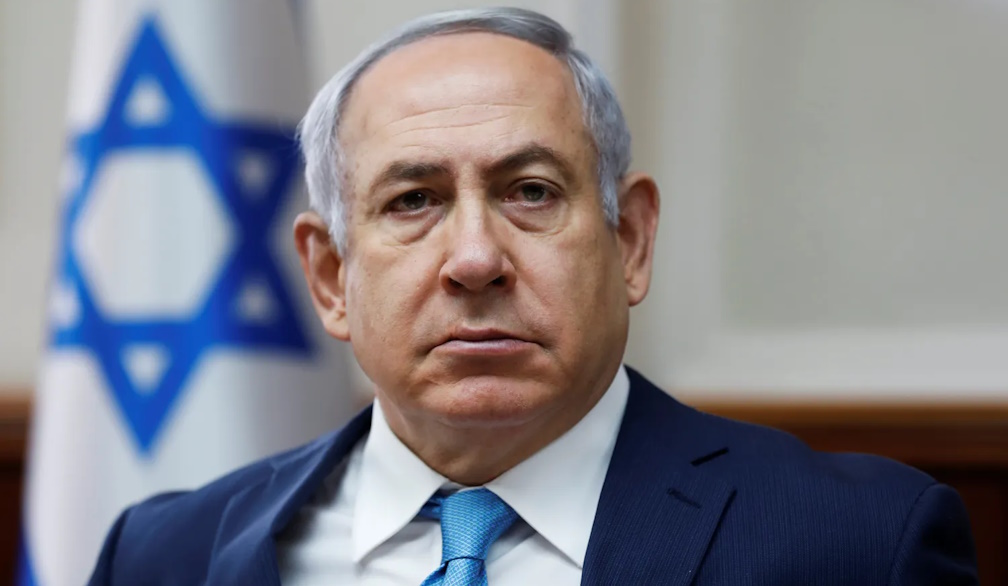Israel has a history of unsuccessful invasions of Lebanon. Will this time be any different?
- Written by Amin Saikal, Emeritus professor of Middle Eastern and Central Asian Studies, Australian National University

Following a massive bombardment of Lebanon, Israel has begun a land invasion of its northern neighbour. Troops have entered southern Lebanon in a bid to push Hezbollah back beyond the Litani River, 29 kilometres from the Israeli border. The stated goal[1] is to facilitate the return of some 60,000 displaced Israelis to their homes in northern Israel.
By killing[2] Hezbollah leader Hasan Nasrallah and several of his commanders over the weekend, Israel has already struck a serious blow to the group.
This has boosted Israeli Prime Minister Benjamin Netanyahu’s profile, despite a majority of Israelis wanting to see his departure[3].
Israel is now set to repeat its Gaza operations in Lebanon, with a view to reordering the Middle East in its own interests. But has it bitten off more than it can chew?
Unsuccessful track record
Israel has been here before.
It invaded Lebanon as far as the capital Beirut in 1982[4], in an attempt to eliminate the Palestine Liberation Organisation. It was trying to extinguish the Palestinian resistance to Israel’s occupation of the West Bank, Gaza and East Jerusalem that had existed since the 1967 Israeli–Arab War[5].
1982 was also the year Hezbollah was formed with the help of the recently established Islamic government in Iran.
Israel empowered its Lebanese Christian allies to massacre hundreds[6] of Palestinians in Sabra and Shatila refugee camps in Beirut. It also forced the Palestinian Liberation Organisation to shift its headquarters from Beirut to Tunisia.
Israel then carved out a security zone to the north of its border, but faced stiff resistance from Hezbollah. As Israeli casualties mounted, the then prime minister Ehud Barak made a unilateral withdrawal[8] in 2000.
The pullout amplified Hezbollah’s popularity and strength as a formidable political and paramilitary force against Israel and its allies.
Israel invaded Lebanon in 2006 in a bid to wipe out Hezbollah. It failed to achieve its objective. After 34 days of bloody fighting and substantial costs for both sides, it accepted a United Nations Security Council resolution for a ceasefire[9], with Hezbollah emerging triumphant.
Defiant warfare
Netanyahu feels confident of success this time. He also has the backing of his extremist ministers, especially those of national security, finance and defence. He depends on their support for his domestic political survival.
Israel has more firepower than ever before. It has displayed it in the Gaza war while revenging Hamas’s killing of more than 1,000 Israelis and abducting some 240 Israeli and foreign nationals on October 7[10].
In scorched-earth operations, the Israel Defense Forces have flattened swathes of the Gaza Strip and killed more than 40,000[11] of its civilians – 35% of them were children – with two million more having been repeatedly displaced.
In this, the Netanyahu leadership has ignored the norms of warfare, international humanitarian law, a UN Security Council resolution[12] for a ceasefire, and the International Court of Justice’s warning against genocidal actions[13].
Further, he has brazenly deflected widespread global condemnation of Israeli actions.
Buttressing his defiant stance has been the United States’ “iron-clad” military, financial and economic support of Israel. Washington has just approved[14] a further US$8.7 billion (about A$12.5 billion) aid package in support of Israel’s Lebanon campaign.
Netanyahu has had no compelling reason even to be amiable to Washington’s calls for restraint or ceasefire.
Will this time be different?
Netanyahu’s confidence is reinforced still further by Israel’s nuclear capability. Although undeclared, Israel reportedly possesses many nuclear weapons[15] for regional deterrence and military supremacy in the region.
Netanyahu and his supporters have claimed their use of disproportionate force to be legitimate in self-defence against what it calls the terrorist tentacles (Hamas, Islamic Jihad and Hezbollah) of the Iranian octopus[16]. With the US and several of its Western and regional Arab allies having shared his posture, Israel is now focused once more on the unfinished business of uprooting Hezbollah.
Hezbollah forms a key element of Iran’s “axis of resistance” against Israel and the US. Netanyahu knows destroying the group would mean the breakup[18] of Iran’s national and regional security system. He is not averse to risking a direct confrontation with Iran, while remaining assured of full US support in such an event.
Tehran cannot be expected to abandon Hezbollah, but it also has other domestic and foreign policy priorities. Newly elected Iranian president Masoud Pezeshkian has assumed power with promises to reduce theocratic political and social restrictions and improve living conditions for most Iranians.
Pezeshkian is also committed to improving Iran’s regional and international relations, including reopening negotiations with the West (particularly the US) regarding Iran’s nuclear program[19], so as to end US-led sanctions.
Pezeshkian appears to have the backing of the powerful Supreme Leader Ayatollah Ali Khamenei, who has shown a willingness to be pragmatic when needed. His foreign minister Abbas Araghchi has stated that Hezbollah is capable of defending itself[20].
For now, Tehran’s approach is to let Israel be trapped in Lebanon, as on previous occasions.
Read more: Benjamin Netanyahu is triumphant after Hassan Nasrallah's assassination. But will it change anything?[21]
Hezbollah is not Hamas: it is damaged but still quite well armed and strategically placed. The group will be able to wage an endless resistance to Israeli occupation. This could come at high human and material costs for the Jewish state that could also prevent many Israelis from returning home to northern Israel.
At this stage, it is important to remember two points.
One is that after a year-long pernicious campaign, Israel still has not completely succeeded in extinguishing Hamas’s resistance. The job of taking on Hezbollah in a ground war could prove to be much harder and more hazardous.
The other is that, like Netanyahu, former US president George W. Bush sought to reorder the Middle East according to US geopolitical preferences. He intervened in Afghanistan and Iraq under the guise of a war on terrorism and promoting democracy.
But America’s actions further destabilised the region.
Since World War II, the application of brute force has rarely served as a viable substitute for diplomacy in managing world problems.
References
- ^ stated goal (www.bbc.com)
- ^ killing (theconversation.com)
- ^ departure (theconversation.com)
- ^ in 1982 (www.theguardian.com)
- ^ Israeli–Arab War (www.bbc.com)
- ^ massacre hundreds (www.aljazeera.com)
- ^ LEFTERIS PITARAKIS/AP (photos.aap.com.au)
- ^ unilateral withdrawal (www.rte.ie)
- ^ ceasefire (www.nytimes.com)
- ^ October 7 (www.theguardian.com)
- ^ 40,000 (www.aljazeera.com)
- ^ resolution (press.un.org)
- ^ against genocidal actions (www.bbc.com)
- ^ just approved (www.reuters.com)
- ^ many nuclear weapons (www.armscontrol.org)
- ^ Iranian octopus (www.iranintl.com)
- ^ SARAH YENESEL/EPA (photos.aap.com.au)
- ^ the breakup (ecfr.eu)
- ^ nuclear program (www.bbc.com)
- ^ defending itself (www.presstv.ir)
- ^ Benjamin Netanyahu is triumphant after Hassan Nasrallah's assassination. But will it change anything? (theconversation.com)

















